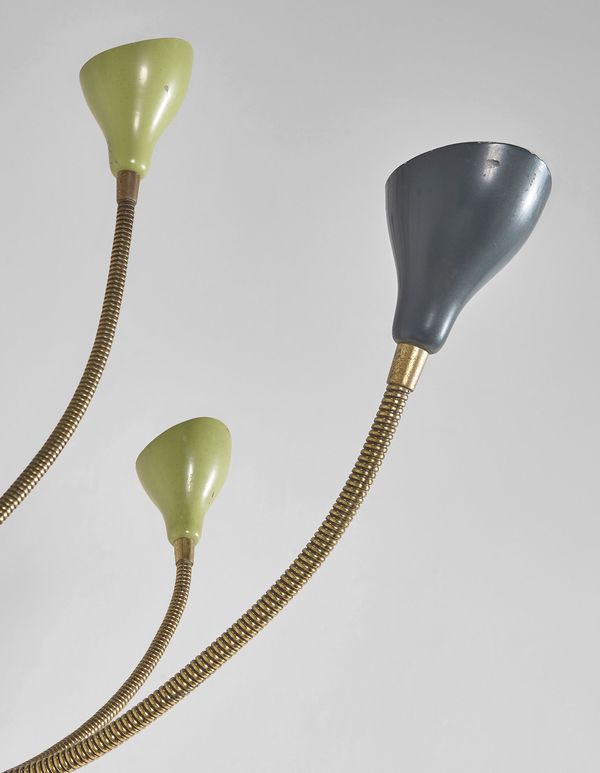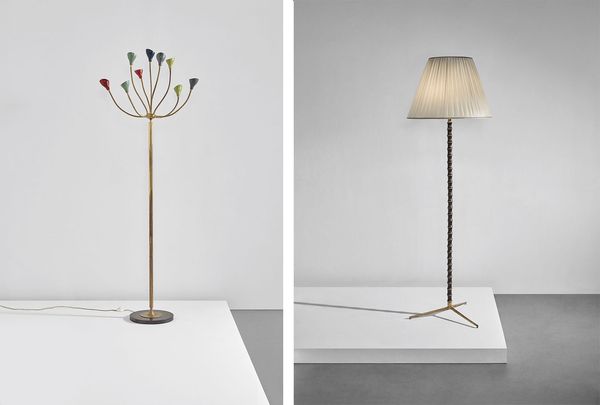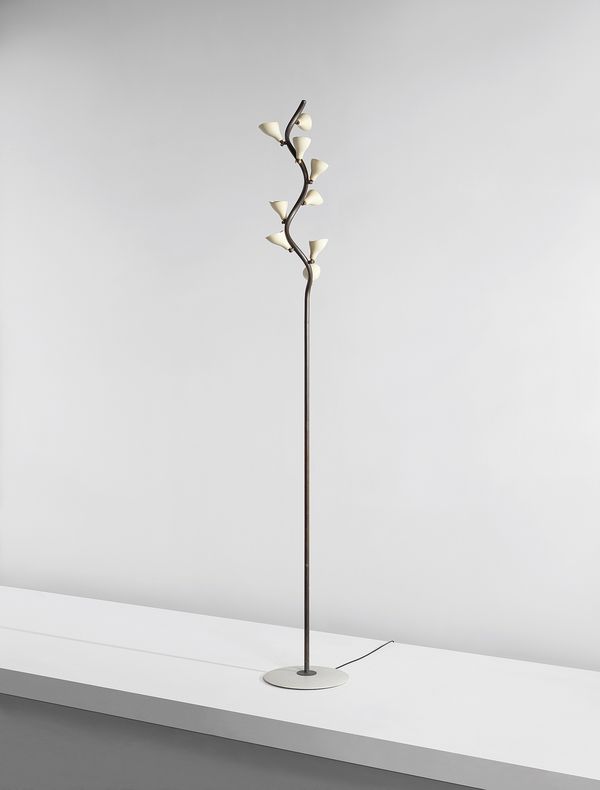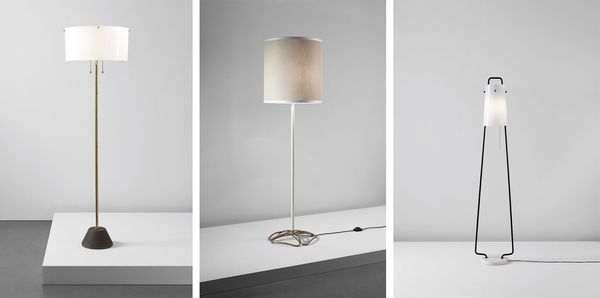Gino Sarfatti Rare adjustable floor lamp, circa 1948 (detail)
Rising above the devastation of World War II, post-war Italian design reached new heights of productivity and ingenuity, particularly in the realm of lighting. Ironically, the shortage of raw materials and machinery fueled the creativity of designers. Wartime research had also contributed to the development of new materials and production techniques, all of which the designers embraced, creating radical forms that would have been impossible before the conflict. Traditional materials such as marble still appeared, but there was no hierarchy between the old and the new.
(Left) Gino Sarfatti Rare adjustable floor lamp, circa 1948; (Right) Floor lamp, model no. 1025, 1946-1948
Triennale exhibitions held in Milan beginning in 1951 spurred inventiveness, development, and national pride. Awards such as the Compasso d’Oro (initially sponsored by the Milanese department store La Rinascente and later by the Associazione per il Disegno Industriale) inspired competition and originality, whilst Italian publications such as Domus and Stile further bolstered and disseminated designers’ efforts.
(Left) Gino Sarfatti Floor lamp, model no. 1051/M, circa 1951; (Right) Table lamp, model no. 537 G, circa 1950
Among the most important factors in the success of Italian post-war lighting design, however, was the tradition of small-scale, family-owned craft shops and companies, which fostered close relationships between designers, manufacturers, and artisans. The intimacy of this arrangement afforded companies the freedom to experiment and take risks where the costs and constraints of large-scale production would have limited this elsewhere. Shops often manufactured their own molds and tools, which led to novel forms and original designs.
Among the most important factors in the success of Italian post-war lighting design… was the tradition of small-scale, family-owned craft shops and companies.
Gino Sarfatti Floor lamp, model no. 1034, 1946-1951
The eclectic, expressive nature of Italian lighting owes its success in part to these special circumstances. As the architect Giancarlo De Carlo wrote, "Elements of this taste grew out of a training and a vocation with its roots in the Milanese tradition, or rather one thread in the intricate Milanese tradition: the neo-classical society, from which the craftsmen drew their sense of measure, of formal restraint, their careful workmanship, and on the other hand the equilibrium and serenity that made them at peace with the world."
(Left) Gino Sarfatti Floor lamp, model no. 1056, circa 1948; (Middle) Gino Sarfatti Extendable floor lamp, model no. 1032, circa 1948; (Right) Floor lamp, model no. 1068, circa 1956.
Before founding his company Arteluce in 1939, Gino Sarfatti studied aeronautical engineering. He brought the inventiveness of a self-taught outsider to the field of lighting design, while his mechanical background lent lightness and ingenuity of construction. Poetic underpinnings are also evident in Sarfatti's floor lamp, model no. 1034 illustrated here there features a nearly 8' twisting brass stem graced with nine delicate, articulating white shades like buds on a flower.
Phillips will offer eight lamps by the celebrated Italian lighting master Gino Sarfatti, from a private Italian collection, in our New York Design auction, 9 June 2016.




